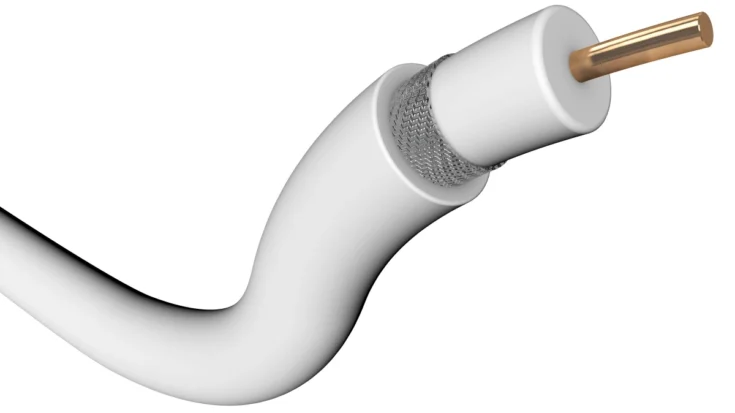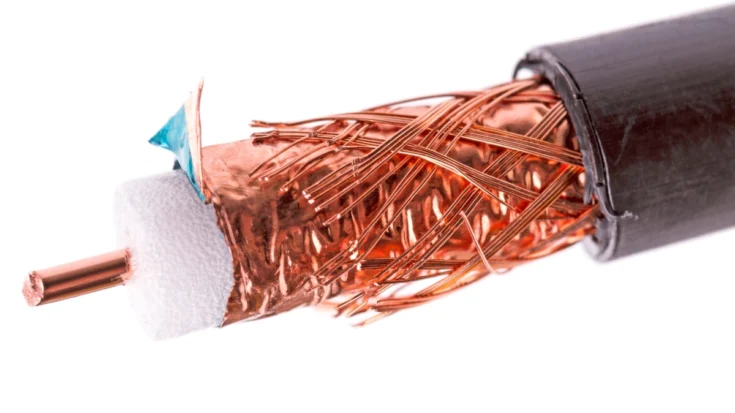Coaxial cable provides many benefits, especially a unique set of characteristics that make it suitable for certain applications while presenting challenges in others. However, the advantages and disadvantages of coaxial cable cannot be separated even though we can feel the benefits.
The advantages and disadvantages of coaxial cable include wide bandwidth, resistance to interference, no need for additional power, limited range, thick and stiff cable contours, to vulnerability to physical damage.
This article will inform you about some of the advantages and disadvantages of coaxial cable that you can consider.
Also Read
Table of Contents
The Advantages and Disadvantages of Coaxial Cable
Like any other technology, coaxial cable has several advantages that can be utilized and disadvantages to consider. The advantages of coaxial cable include wide bandwidth, resistance to interference, to no need for additional power, while the disadvantages include limited range, thick and stiff cable contours, to vulnerability to physical damage. Here are the advantages and disadvantages of coaxial cable:
The Advantages of Coaxial Cable

Here are some of the advantages of using coaxial cable:
1. Protection from electromagnetic interference
One of the advantages of coaxial cable is its ability to have protection from electromagnetic interference. Coaxial cables are more resistant to interference because they have a metal shield that can block signal interference from electromagnetic sources.
2. Wide bandwidth
Wide bandwidth is another advantage of coaxial cables. This cable allows data transmission at a higher speed because it has a wider bandwidth than twisted pair cables.
3. Resistant to interference
Another advantage of coaxial cable that cannot be underestimated is its ability to withstand interference. The metallic shielding on coaxial cables helps reduce signal interference, making it a good choice for signal transmission that is prone to interference.
4. Flexible in installation
Coaxial cables are ideal for use in telecommunications, broadcast, and industrial applications that require low-cost networking and easy installation. Its advantages of being easy to install and optimize make it used in small to large-scale networks.
5. No need for additional power
Another advantage of coaxial cable is its ability to transmit signals without the need for additional power. This cable is ideal for use in networks that require low or no power, such as CCTV networks and audio networks.
The Disadvantages of Coaxial Cable

Here are some of the disadvantages of using coaxial cable:
1. Limited range
One of the drawbacks of coaxial cable is its limited range. Unlike UTP and fiber optic cables that have a long-range, this cable has a shorter range. To increase the range, you need a repeater tool.
2. Thick and stiff cable contours
Thick and stiff cable contours are another drawback of coaxial cables. The contour of the cable will make the installation process very difficult, especially in tight locations. Therefore, this cable is still less popular than other types of cables such as fiber optics and UTP.
3. Only one type of copper wire
Another thing that must be considered from the shortcomings of coaxial cables is the possibility of collision during the data transmission process. This is because this cable only has one type of copper wire inside.
4. High investment cost
High-quality coaxial cables can have a higher price, especially for applications that require special specifications. Its underground installation also comes at a considerable cost. Careful planning before the installation of these cables is essential.
5. Vulnerability to physical damage
Although quite durable, coaxial cables are susceptible to physical damage. The cable can be damaged if it is bent too sharply or pinched. Therefore, a technician who is aware of this is needed.
Those are the advantages and disadvantages of coaxial cables that you can consider before deciding to use them. When you choose a CCHN Modem, you can feel all the advantages from wide bandwidth, and resistance to interference, to no need for additional power.
However, don’t forget to make a consideration of the disadvantages which are limited range, thick and stiff cable contours, to vulnerability to physical damage.
Another thing to note is that coaxial cable technology must pass the certification test from the Directorate General of Digital Infrastructure (DJID).
With DJID certification, users can feel calm about using a coaxial cable whose quality and security are guaranteed. For manufacturers or importers of coaxial cable, obtaining certification from DJID is a mandatory step before the device can be officially marketed in Indonesia.
To simplify the certification process, you can use Type Approval Certification Services for ICT Products are available to assist with this process as a reliable solution.











